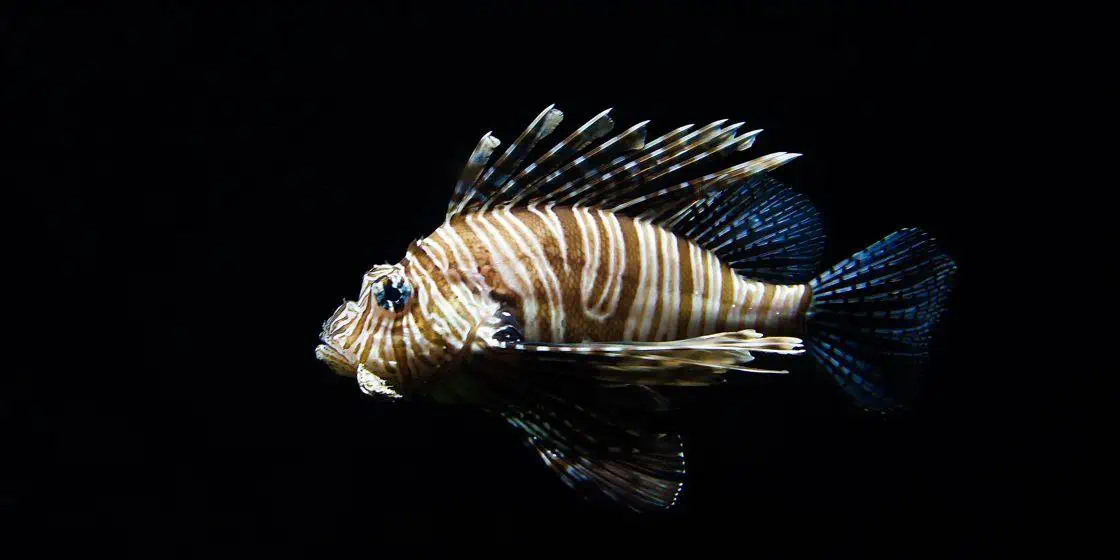How to Pack Fish Tanks and Aquariums
Posted in: I'm a Mover, Kids & Pets, Pro Packing GuidesOnce upon a time a move crew and I walked into a customer’s plush home – and came face to face with a massive aquarium. Brightly colored tropical fish. Lots of plant things. Coral and glass and mini rock formations. It was beautiful – and very intimidating.
‘Does the fish tank go too?’ I asked at the end of the initial walk-through, cowering in fear at the oncoming answer.
‘No, you can leave this alone,’ said the man, who with those words became our favorite customer in the world. ‘Someone else is taking care of it.’
Good thing, because none of us knew the first thing about moving fish tanks that held anything more than a film of dried algae.
Chances are slim, but if we ever find ourselves staring at an aquarium that needs to be moved, we’ll need to know a few things.
Packing the Tank
The basics of packing a glass aquarium are, well, pretty basic. Here are the main points:
- Use a carton that is appreciably larger than the tank, to accommodate the large amounts of packing paper we will be using to firmly cushion the tank and keep it in place, protected from exterior pressure and inadvertent impact. Consider using a dish pack for its double-walled strength – or even a wardrobe box if the tank is that big. Then prepare to mark that carton with plenty of arrows, because…
- Fish tanks are not meant to be placed on end. So if you are packing that tank in a dish pack or wardrobe – or any carton for that matter – make sure it is clear that (a) there is a fish tank inside, and (b) it needs to be kept upright at all times. Yeah, and make sure no book boxes get loaded on top of it.
- Before packing it up, empty the tank completely. Like pressboard entertainment units, fish tanks aren’t designed to be moved. Left to stand alone they can bear a heavy burden but start twisting and torqueing them and they will come apart at the seams. Now it is only common sense to drain all the water out of an aquarium before packing it up, but what about those rocks and plants and filtration parts and the little scuba diver with the metal helmet? Those all get taken out too – and packed separately after they are wrapped up. There’s no need and no sense in putting uneven and inconsistent pressure on the sides or even the bottom of the customer’s tank.
- With an empty fish tank in an otherwise empty box, do we then fill the tank with massive wads of packing paper so we can in turn pad the top of the inside of the box? We could, but that would be a fantastic waste of paper. Instead use a flat carton or a usable-sized piece of cardboard and lay it over the top of the tank. Not only does this save us a tank’s worth of paper but helps provide better, more even support for the paper padding we are putting on top to hold that tank in place.
Packing the Accessories
If the customer wants us to pack all the decorative stones and colored gravel and fake rock tunnels and the little treasure chest with the lid that opens and closes that’s fine. Remember though – and remind the customer if he or she is not already aware – that it is best (for the fish) to transport these things in the same aquarium water they have been sitting in for weeks and months. This is because there are aquatic bacteria on these items that help maintain proper water quality. Thus a bucket (or a few buckets) with sealable lids would come in handy.
Live plants would also need to be transported while submerged in the aquarium water (not fresh tap water!). Same goes for the filtration parts that normally rest underwater. Drying everything out (except the live plants) does not equal the end of the aquarium, but it will demand a complete restart of the cycling process of getting the water ready for reintroducing the fish.
Speaking of the fish…
Packing the Fish
Don’t. Unless the customer is moving locally and can reintroduce the fish to the tank in a couple of hours, it is best to refer them to this article or this one or suggest calling the store where they bought their fish. The process of moving fish, whether freshwater or salt, is complicated and fraught with pitfalls. If the customer is moving locally they might be able to successfully hold their fish in a sealable bucket filled halfway with aquarium water for a short while, but again, at destination the process of getting the water in the tank to a level where the fish won’t die of shock or biological reaction goes well beyond the scope of the average person’s knowledge. Suggest they get expert advice or help.
Naturally, we might feel the desire to assist them in some concrete way. But let’s just not go there.
The Upshot
I’ve never, ever been faced with the challenge of moving someone’s pet, let alone a fish. Any rational customer would probably not expect their movers to do so. But knowledge is power, and if your customer starts asking questions it is good to have a few answers – even if those answers amount to “Check this website” and “Call the experts who sold you the fish.” Everyone would likely agree that they’d know better than the rest of us.
Empty tanks, on the other hand, we can handle. Just keep the above points in mind.





Nick
An expensive aquarium should always be crated. Cheaper $50-$100 glass aquariums should ride in a vehicle. The shock from riding in a truck may be just enough to weaken them to where they burst weeks later when the customer is not home. If you move an aquarium a waiver is a must.